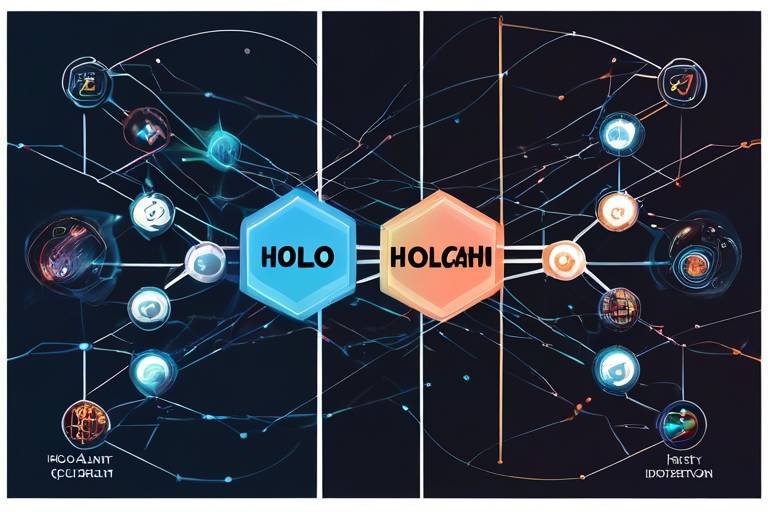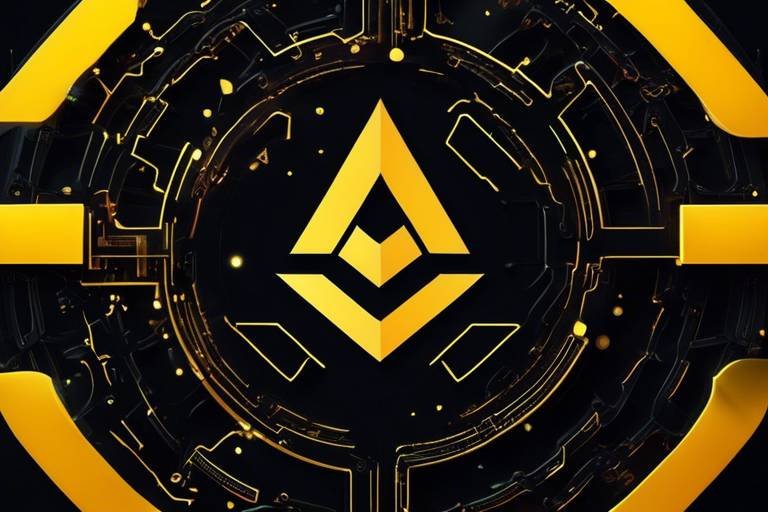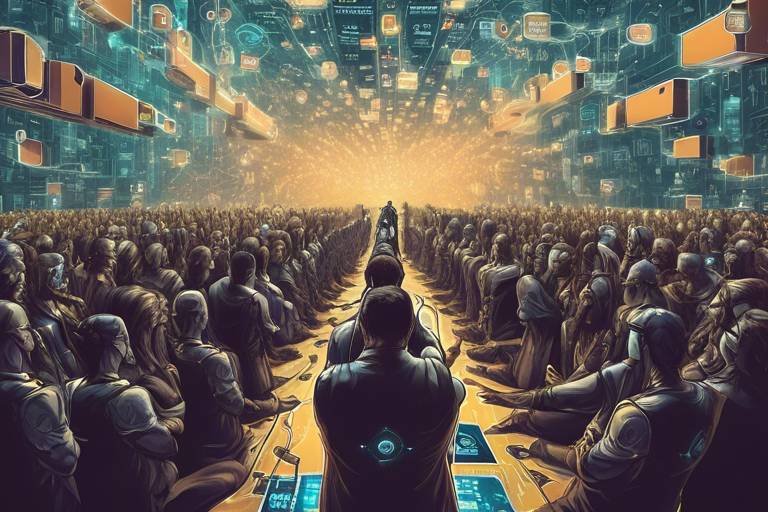Holochain - The Next Generation of Distributed Applications
Imagine a world where applications are not just tools, but empowering platforms that give users complete control over their data and interactions. Welcome to the world of Holochain, an innovative framework that is set to revolutionize the way we think about decentralized applications. Unlike traditional models that rely on a central server, Holochain operates on a peer-to-peer basis, allowing developers to create applications that are not only scalable but also user-centric. This means that as more users join the network, the performance of applications improves without the need for cumbersome consensus mechanisms. It's like a growing community where everyone contributes to the collective strength without a single point of failure.
Holochain's architecture is designed to prioritize autonomy and data integrity. Each user, or agent, maintains their own data, which enhances privacy and fosters a personalized experience. This is a stark contrast to the centralized models we see today, where user data is often controlled by large corporations. In Holochain, users have the power to decide how their information is used, creating a trust-based environment that is sorely needed in today's digital landscape. Think of it as having your own personal vault where you can store and manage your information without worrying about unauthorized access.
One of the most compelling aspects of Holochain is its potential to transform various industries. From social networking to supply chain management and healthcare, the versatility of Holochain's framework opens the door to a plethora of innovative solutions. For instance, in social networking, Holochain enables the creation of decentralized platforms where users can connect authentically, free from the manipulative algorithms of centralized services. In supply chain management, it enhances transparency by allowing all participants to securely share information about product origins and movements, thereby building trust among consumers and businesses alike.
In summary, Holochain is not just a new technology; it is a paradigm shift that redefines how we interact with applications and data. By empowering users and promoting decentralization, Holochain is paving the way for a more secure, transparent, and user-centric digital future. As we continue to explore its capabilities, it becomes clear that Holochain is not just the next generation of distributed applications; it is the foundation for a new era of digital interaction.
- What makes Holochain different from blockchain?
Holochain does not rely on a central consensus mechanism, allowing it to scale more efficiently as users join the network while maintaining individual data ownership.
- How does Holochain ensure data integrity?
Holochain uses cryptographic hashes to maintain data integrity, ensuring that only authorized users can access or modify their information.
- Can Holochain be used for commercial applications?
Absolutely! Holochain's framework is versatile and can be applied across various industries, including finance, healthcare, and supply chain management.

What is Holochain?
Holochain is a groundbreaking distributed computing framework that empowers developers to create peer-to-peer applications without relying on a centralized server. Imagine a world where your data isn't locked away in a corporate vault, but instead, it's in your hands, accessible only to you. This is the essence of Holochain. It promotes autonomy and user control over data, allowing individuals to engage with applications in a way that is both secure and personalized.
At its core, Holochain operates on the principle of distributed trust. Unlike traditional systems, where a single entity has the final say, Holochain enables users to connect directly with one another. This means that each user maintains their own data and interacts with the network on their terms. Think of it like a neighborhood potluck: everyone brings their own dish (data), and everyone gets to share and enjoy without a centralized kitchen dictating what can or cannot be served.
The architecture of Holochain is designed to facilitate a wide range of applications, from social networks to supply chain management, all while ensuring that users retain control over their information. This framework is not just about creating applications; it's about creating a new way of interacting with technology that respects privacy and individual rights. With Holochain, the power is shifted back to the users, allowing them to decide how their data is shared and utilized.
To further illustrate, Holochain employs a unique mechanism that allows each application to operate independently while still being part of a larger ecosystem. This means that developers can build applications tailored to specific needs without worrying about the limitations imposed by centralized infrastructures. It’s like having a toolbox where each tool is designed for a specific task, enabling creativity and innovation without constraints.
Overall, Holochain is more than just a technology; it's a movement towards a more decentralized future. As we continue to explore its capabilities, we can expect to see a shift in how we interact with digital applications, paving the way for a more empowered and autonomous user experience.

Key Features of Holochain
Holochain is not just another framework; it represents a paradigm shift in how decentralized applications are built and operated. One of the most striking aspects of Holochain is its agent-centric architecture, which puts individual users at the heart of the system. Unlike traditional models where data is stored on a central server, in Holochain, each user, or agent, maintains their own data. This leads to enhanced privacy and a more personalized experience. Imagine a world where you are not just a data point in a vast database but the owner of your own digital identity. This shift empowers users, allowing them to take control of their online presence.
Another remarkable feature of Holochain is its ability to achieve scalability without consensus. Traditional blockchains often struggle with scalability due to the need for consensus mechanisms, which can slow down transactions as more nodes join the network. Holochain, on the other hand, scales organically. As more users come on board, the network becomes faster and more efficient without the bottlenecks typically seen in blockchain systems. This is akin to a bustling marketplace that thrives on the participation of its vendors and customers, rather than being hindered by bureaucratic processes.
Data integrity is another cornerstone of Holochain's design, achieved through the use of cryptographic hashes. Each piece of data is secured in a way that ensures it cannot be altered without detection, thus fostering trust among users. This feature is crucial for applications that handle sensitive information, as it guarantees that the data remains intact and verifiable. Think of it as a digital fingerprint for every piece of information, ensuring that what you see is indeed what was intended.
Moreover, Holochain promotes decentralization benefits that are hard to ignore. In a decentralized network, no single entity has control, which means that the risks associated with censorship and data manipulation are significantly reduced. Users can engage freely without the fear of being silenced or having their data misused. This resilience against attacks enhances the overall security of the network, making it a safe haven for those who value their privacy and autonomy.
The combination of these features creates a robust ecosystem where applications can thrive without the limitations imposed by traditional frameworks. Holochain’s unique approach not only enhances user experience but also sets a new standard for what decentralized applications can achieve. As we delve deeper into the potential use cases for Holochain, it becomes clear that the implications of these features extend far beyond mere technology—they represent a fundamental shift in how we interact with the digital world.

Agent-Centric Architecture
Holochain's is a game changer in the realm of decentralized applications. Unlike traditional systems that rely on a central server, Holochain empowers individual users, or agents, to maintain and control their own data. Imagine a world where you are the master of your digital information, not some faceless corporation. This approach not only enhances privacy but also allows for a more personalized experience within applications. Each agent operates independently, which means that applications can be tailored to meet the unique preferences and needs of each user.
One of the most significant advantages of this architecture is the reduction of bottlenecks typically associated with centralized systems. In traditional setups, the central server often becomes a single point of failure, leading to downtime and data loss. However, in Holochain, each agent's data is stored locally, and interactions occur directly with other agents. This creates a more resilient network that can withstand individual node failures without affecting the overall functionality.
Moreover, this architecture fosters a sense of community and collaboration among users. Since each agent is responsible for their own data, they can choose to share it with others as they see fit. This is a stark contrast to the current model of social media platforms, where user data is often harvested and monetized without consent. In Holochain, the power is shifted back to the users, allowing them to engage in meaningful interactions without the fear of exploitation.
To further illustrate the benefits of Holochain's agent-centric architecture, consider the following key points:
- Enhanced Privacy: Users control their data, leading to a more secure environment.
- Personalized Experiences: Applications can be customized based on individual preferences.
- Increased Resilience: The network remains functional even if individual nodes go offline.
- Empowered Users: Users have the autonomy to share or withhold their data as they choose.
In summary, Holochain's agent-centric architecture represents a shift toward a more user-focused approach in application development. It not only addresses the shortcomings of centralized systems but also opens the door for innovative applications that prioritize user autonomy and data integrity. The implications for various industries are profound, as this model promotes a new era of digital interactions where users are truly in control.
- What is Holochain? Holochain is a distributed computing framework that allows developers to create decentralized applications without relying on a central server.
- How does agent-centric architecture work? In Holochain, each user maintains their own data, allowing for personalized experiences and greater privacy.
- What are the benefits of using Holochain? Holochain offers enhanced privacy, personalized experiences, increased resilience, and empowers users with data ownership.
- Can Holochain be used in various industries? Yes, Holochain's framework can be applied across sectors such as social networking, supply chain management, and healthcare.
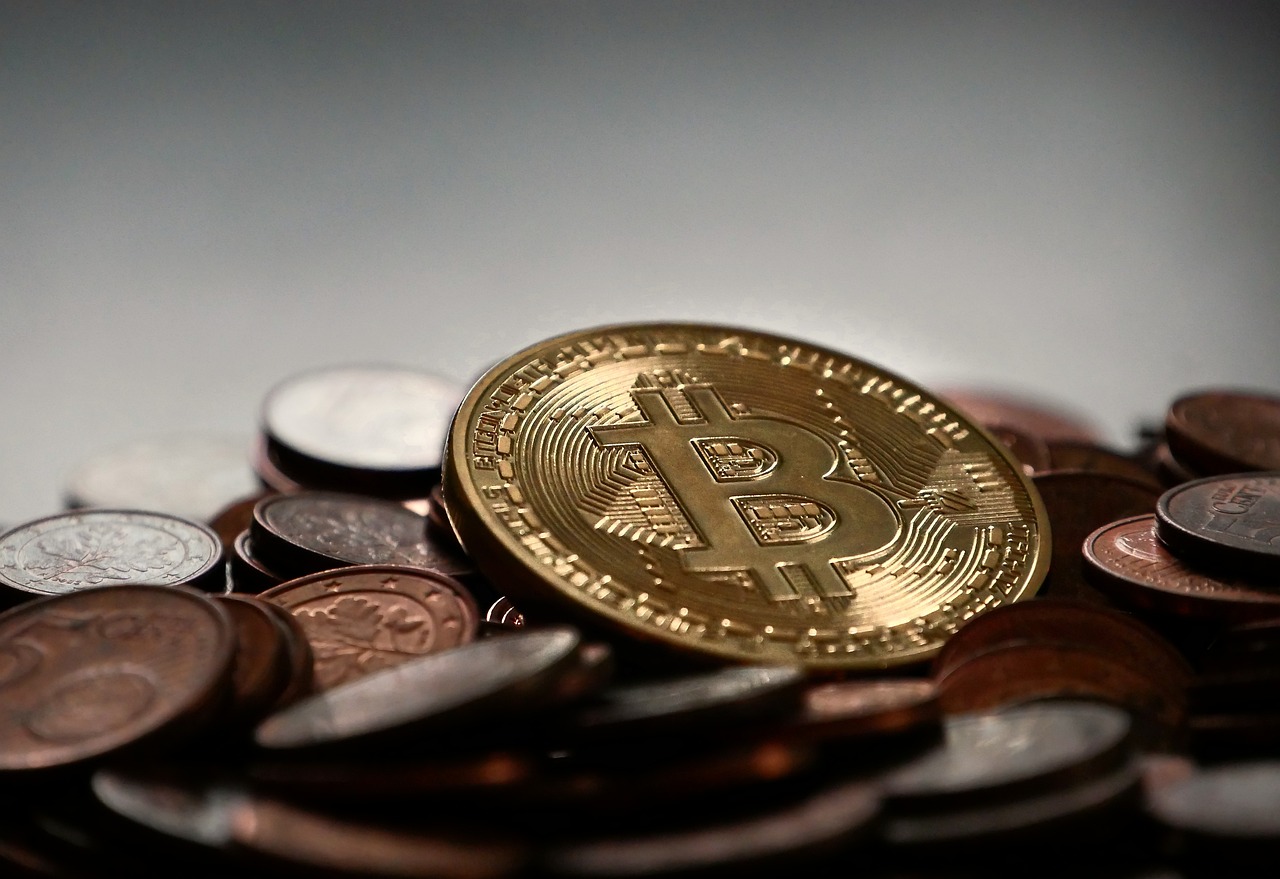
Decentralization Benefits
Decentralization is one of the standout features of Holochain, and it brings a plethora of benefits that fundamentally change how we think about data and applications. Imagine a world where no single entity holds the keys to your information—where you, the user, are in control. That's the essence of decentralization in Holochain. By distributing control across a network of peers, it mitigates the risks associated with centralization, such as data breaches, censorship, and single points of failure.
One of the most significant advantages is the enhanced resilience against attacks. In a traditional centralized system, if the server goes down or is compromised, the entire application can be rendered useless. However, Holochain's decentralized framework means that even if some nodes are attacked or fail, the network remains operational. This redundancy is akin to having multiple backup generators in a power grid; if one fails, others can pick up the slack without a hitch.
Moreover, decentralization fosters a sense of community and collaboration. Users can interact directly with one another without the need for intermediaries, which not only speeds up transactions but also builds trust among participants. In a decentralized network, users can verify information independently, leading to greater transparency. This is particularly crucial in industries where trust is paramount, such as finance or healthcare.
Another critical aspect is the reduction of censorship. Centralized platforms can impose arbitrary rules on what content is acceptable, often leading to the suppression of free speech. In contrast, Holochain empowers users to express themselves without fear of censorship, as there’s no central authority to enforce such restrictions. This democratization of data is vital in today’s digital landscape, where the free flow of information is essential for innovation and progress.
To summarize, the benefits of decentralization in Holochain include:
- Enhanced Security: Reduced risk of data breaches and attacks.
- Increased Resilience: Network remains functional even if some nodes fail.
- Community Engagement: Direct interaction fosters trust and collaboration.
- Freedom of Expression: Elimination of censorship enhances user autonomy.
As we move towards a more interconnected future, the decentralization benefits offered by Holochain could very well redefine how applications are built and operated. With users at the heart of the system, we can expect a shift towards more equitable and user-friendly technologies.
What is Holochain?
Holochain is a distributed computing framework that enables developers to create decentralized applications without relying on a central server.
How does decentralization improve security?
Decentralization reduces the risk of data breaches and attacks by distributing control across a network of peers, making it harder for malicious actors to compromise the system.
Can users control their data in Holochain?
Yes! One of the core principles of Holochain is that users have full ownership of their data, allowing them to decide how it is shared and utilized.
What industries can benefit from Holochain?
Holochain can be applied in various sectors, including social networking, supply chain management, healthcare, and more, enabling innovative solutions that prioritize user sovereignty and data privacy.
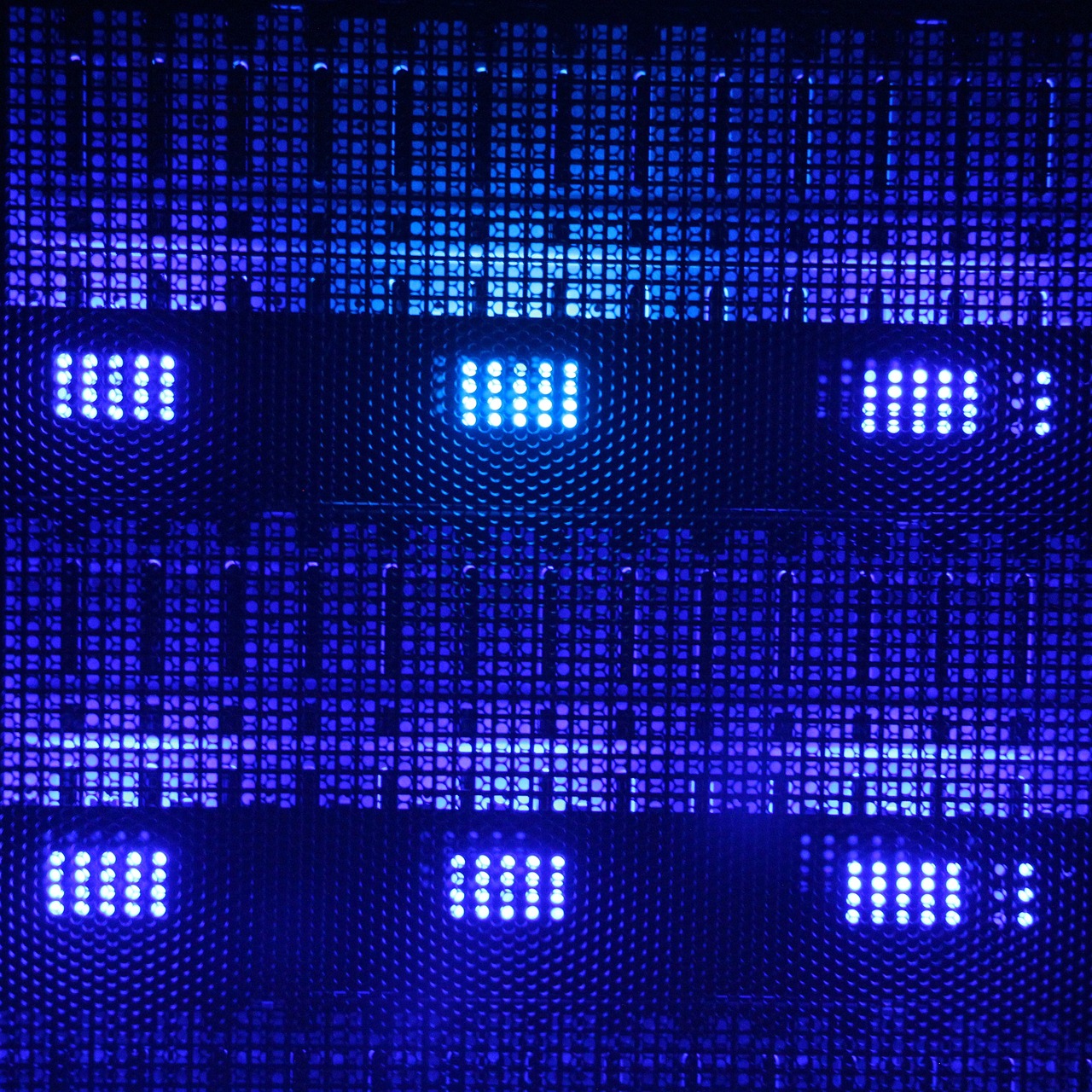
Data Ownership
In the digital age, the concept of has become more critical than ever. With Holochain, this concept is not just a buzzword; it is a fundamental principle that empowers users. Imagine a world where you are the sole custodian of your personal information, where every click, every like, and every interaction is under your control. This is what Holochain offers—a paradigm shift from traditional models where data is often harvested and exploited by centralized entities.
Holochain's unique architecture ensures that users retain full ownership of their data. This means that you decide how your data is shared and utilized, whether with friends, businesses, or applications. No longer will you be at the mercy of corporations that profit from your information without your consent. Instead, you become the gatekeeper of your digital footprint, fostering a sense of trust and security that is often lacking in today’s internet landscape.
The implications of this are profound. For instance, consider how social media platforms operate today. They collect vast amounts of data, often without transparent consent, and use it to generate revenue. With Holochain, users can create their own social networks where they control their data and interactions. This not only enhances privacy but also encourages authentic connections among users, free from the interference of centralized platforms.
Moreover, the ownership of data extends beyond social interactions. In sectors like healthcare, patients can manage their medical records securely, sharing them only with authorized parties as they see fit. This not only empowers patients but also builds trust between them and healthcare providers. The potential for innovation is limitless when users are in control of their own data, leading to applications that are not only more user-friendly but also more ethical.
To illustrate the importance of data ownership, consider the following table that compares traditional data models with Holochain's approach:
| Aspect | Traditional Models | Holochain |
|---|---|---|
| Data Control | Centralized entities control user data | Users maintain ownership and control |
| Privacy | Data often exploited for profit | Data is shared only at user discretion |
| Trust | Low trust in data handling | High trust due to user control |
| Transparency | Opaque data practices | Transparent data sharing mechanisms |
In conclusion, Holochain's commitment to data ownership is a game-changer. It not only enhances user autonomy but also paves the way for a more ethical and trustworthy digital ecosystem. The future of applications built on Holochain looks promising, as they prioritize user rights and foster a culture of respect for personal data.
- What is Holochain? Holochain is a distributed computing framework that enables peer-to-peer applications, allowing developers to create applications that do not rely on a central server.
- How does Holochain ensure data ownership? Holochain's architecture allows users to retain full control over their data, deciding how it is shared and utilized.
- What are the benefits of using Holochain? Benefits include enhanced privacy, user autonomy, scalability without consensus, and improved data integrity.
- Can Holochain be used in various industries? Yes, Holochain's versatile framework can be applied across sectors such as social networking, supply chain management, and healthcare.

Scalability Without Consensus
When we talk about scalability in the world of distributed applications, the conversation often veers toward the cumbersome processes of consensus mechanisms that traditional blockchains employ. These mechanisms, while effective in ensuring security and integrity, can significantly slow down the system as more nodes join the network. This is where Holochain flips the script. Imagine a bustling city where every resident knows their own route to work, rather than relying on a single traffic controller to manage the flow. Holochain operates in a similar fashion, allowing each node—or user—to maintain its own data and validate transactions independently.
In Holochain, scalability is achieved organically. As more users join the network, they bring with them their own data and validation processes. This structure eliminates the need for a centralized authority or a consensus algorithm, which can become a bottleneck. Instead, every agent (user) acts autonomously, ensuring that the system can handle a growing number of interactions without sacrificing performance. This is akin to a potluck dinner where everyone contributes their own dish; the more participants there are, the richer the meal becomes without any single person having to manage the entire event.
To illustrate this point, let’s consider a simple comparison between traditional blockchain scalability and Holochain’s approach:
| Feature | Traditional Blockchain | Holochain |
|---|---|---|
| Consensus Mechanism | Required for every transaction | No consensus needed |
| Performance | Decreases with more nodes | Increases with more nodes |
| Data Management | Centralized control | Decentralized ownership |
This innovative approach not only enhances scalability but also maintains a level of security and speed that traditional systems struggle to achieve. Users can enjoy a seamless experience, whether they are sending transactions or accessing applications, without the delays often associated with consensus-driven networks. In essence, Holochain's architecture is designed for the future, where growth and efficiency go hand in hand.
Moreover, the absence of a need for consensus means that Holochain can adapt to real-time demands. This is particularly beneficial for applications that experience fluctuating user engagement, such as social networks or e-commerce platforms. Imagine a concert where the crowd can move freely without waiting for permission from a gatekeeper; this is how Holochain enables applications to flourish in dynamic environments.
In conclusion, Holochain’s ability to scale without consensus is not just a technical advantage; it’s a paradigm shift that empowers users and developers alike. By allowing for a more fluid interaction model, Holochain paves the way for a new era of decentralized applications that prioritize user autonomy and experience.
- What is Holochain? Holochain is a distributed computing framework that enables the creation of peer-to-peer applications without relying on a central server.
- How does Holochain achieve scalability? Holochain scales naturally as more nodes join the network, allowing for increased performance without the need for consensus mechanisms.
- What are the benefits of Holochain's agent-centric architecture? This architecture enhances privacy, allows personalized experiences, and ensures users maintain ownership of their data.
- Can Holochain be used for social networking? Yes, Holochain enables the development of decentralized social networks where users control their data and interactions.

Use Cases for Holochain
Holochain is not just a theoretical framework; it’s a practical solution that opens up a world of possibilities across various industries. The versatility of Holochain allows it to be applied in multiple domains, each benefiting from its unique features. Imagine a world where social media platforms respect your privacy, supply chains are transparent, and healthcare data is securely shared only with authorized individuals. Let’s dive deeper into some of the most promising use cases for Holochain.
One of the most exciting applications of Holochain is in the realm of social networking. Traditional social media platforms often exploit user data for profit, leading to privacy concerns and a lack of genuine connections. With Holochain, developers can create decentralized social networks where users maintain control over their data. This empowers individuals to curate their online interactions without the interference of centralized entities. Users can connect authentically, share content freely, and even monetize their contributions without worrying about censorship or data misuse.
Another significant use case lies in supply chain management. In today’s global economy, transparency and traceability are paramount. Holochain provides a framework that facilitates secure sharing of information among all participants in the supply chain. For instance, each product can have a digital footprint, allowing consumers to trace its journey from origin to store shelves. This not only enhances trust between businesses and consumers but also helps in identifying inefficiencies and ensuring compliance with regulations. Imagine being able to scan a product and instantly access its entire history—where it was sourced, how it was transported, and even the ethical practices involved in its production.
Healthcare is yet another sector ripe for disruption through Holochain technology. With the rising concerns over data breaches and patient privacy, Holochain offers a solution that prioritizes data ownership and security. Patients can control who accesses their medical records, ensuring that sensitive information is shared only with authorized healthcare providers. This level of control fosters trust between patients and providers, ultimately leading to better healthcare outcomes. Furthermore, researchers can collaborate securely, sharing insights without compromising individual privacy.
In addition to these sectors, Holochain's framework can be adapted to various other applications. For instance, it can facilitate decentralized marketplaces, community governance platforms, and even educational tools that prioritize user engagement and autonomy. The potential is vast, and as more developers explore Holochain, we can expect to see innovative applications that challenge the status quo.
1. What makes Holochain different from blockchain?
Holochain is agent-centric, meaning each user maintains their own data rather than relying on a central ledger like in traditional blockchains. This allows for greater scalability and user autonomy.
2. How does Holochain ensure data security?
Holochain uses cryptographic hashes to maintain data integrity, ensuring that users have full control over their information and can decide how it is shared.
3. Can Holochain be used for commercial applications?
Absolutely! Holochain's framework is versatile and can be adapted for various commercial applications, including decentralized finance, supply chain management, and social networking.
4. Is Holochain scalable?
Yes, Holochain scales naturally as more nodes join the network, allowing for increased performance without sacrificing security or speed.
5. How can I get involved with Holochain?
You can start by exploring the Holochain documentation, participating in community forums, or even contributing to projects that are being built on the Holochain framework.
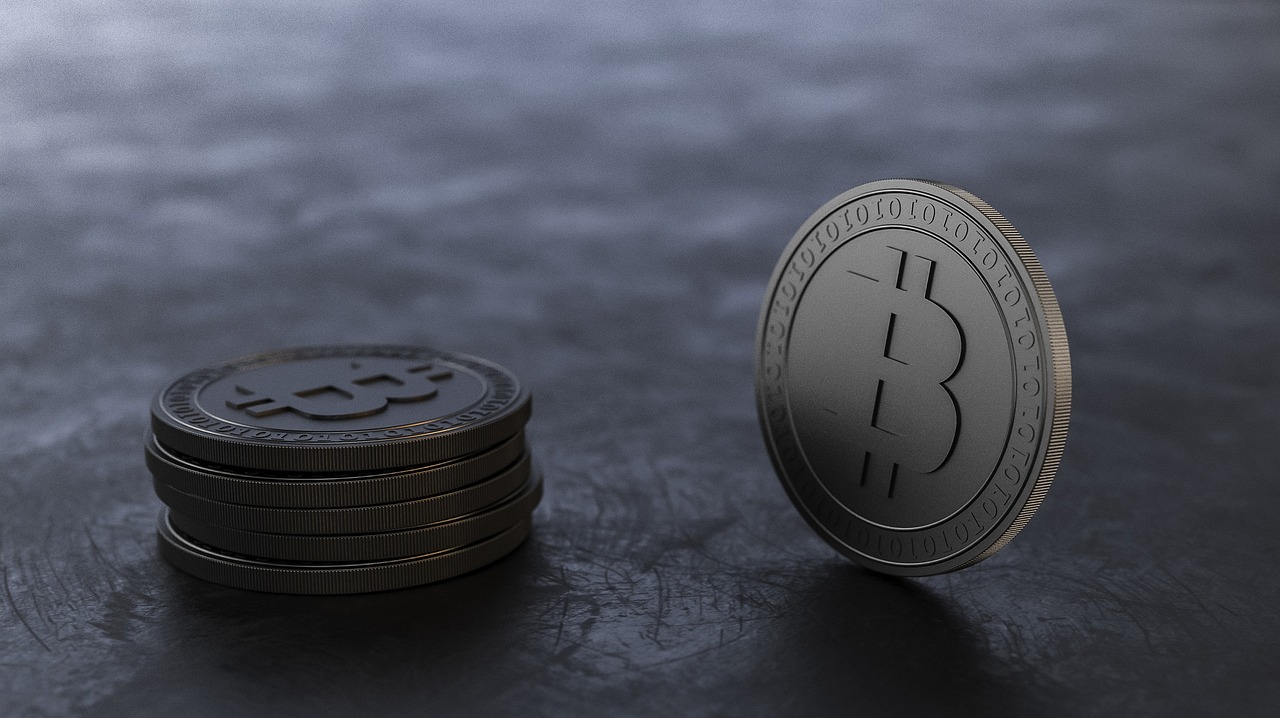
Social Networking Applications
Imagine a world where your social interactions are not governed by a central authority, where your data is your own, and where connections are made on your terms. Holochain is paving the way for this vision by enabling the creation of decentralized social networking applications that prioritize user control and privacy. In traditional social networks, users often find themselves at the mercy of algorithms and policies that dictate how their information is shared and who sees it. With Holochain, this dynamic is flipped on its head.
In a decentralized social network built on Holochain, every user is an agent who maintains their own data. This means that instead of your information being stored on a central server, it's distributed across the network, giving you complete ownership. You decide how much of your personal data to share and with whom. This autonomy is not just empowering; it fosters a sense of trust that is often lacking in platforms dominated by large corporations.
Furthermore, the interactions within these networks are more genuine. Users can connect with others based on shared interests and values without the interference of advertisements or algorithms that prioritize profit over people. This creates a more authentic experience, allowing users to build meaningful relationships. Imagine being part of a community where every voice matters, and every interaction is valued. This is the promise of Holochain's social networking applications.
To illustrate the transformative potential of Holochain in social networking, consider the following key benefits:
- User Empowerment: Users have control over their profiles and the content they share, fostering a sense of ownership and responsibility.
- Privacy Protection: With data stored locally and shared only at the user's discretion, privacy is significantly enhanced.
- Community Building: Decentralized networks encourage the formation of communities based on shared interests, rather than being dictated by corporate interests.
As we move forward, the implications of Holochain in the realm of social networking are profound. It not only challenges the existing paradigms of how we connect but also offers a glimpse into a future where technology serves the people, not the other way around. The potential for innovation is vast, and as more developers explore the capabilities of Holochain, we can expect to see a new wave of social applications that truly reflect the needs and desires of their users.
Q1: What makes Holochain different from traditional social networking platforms?
A1: Holochain is decentralized, meaning that users retain control over their own data, unlike traditional platforms that store user information on central servers.
Q2: Can I still connect with friends on a Holochain-based network?
A2: Absolutely! Holochain allows for peer-to-peer connections, enabling you to maintain and build relationships just like you would on traditional social networks, but with greater privacy and control.
Q3: How does Holochain ensure data privacy?
A3: Holochain uses cryptographic methods to secure data, allowing users to share only what they want, when they want, without fear of unauthorized access.
Q4: What are the potential risks of decentralized social networks?
A4: While decentralization reduces the risk of censorship and data breaches, users must still be vigilant about their own data sharing practices and interactions.

Supply Chain Transparency
In today's fast-paced world, where consumers are increasingly conscious about the origins of their products, transparency in supply chains has become more than just a buzzword; it's a necessity. Holochain offers a revolutionary approach to achieving this transparency by enabling all participants in the supply chain to securely share information. Imagine a world where every product's journey—from the raw materials sourced to the final product delivered to your doorstep—is documented and accessible to everyone involved. This level of visibility not only builds trust among consumers but also fosters accountability among businesses.
One of the most significant advantages of using Holochain in supply chain management is the ability to provide real-time tracking. With its decentralized framework, each participant in the supply chain can record their transactions, updates, and changes directly onto the network. This means that if a product is recalled due to safety concerns, the information can be disseminated immediately to all stakeholders, ensuring swift action. In contrast to traditional systems, where data can be siloed and delayed, Holochain allows for instantaneous updates, thereby enhancing the overall efficiency of the supply chain.
Furthermore, the cryptographic features of Holochain ensure that the data shared is not only transparent but also secure and tamper-proof. Each entry made in the supply chain is hashed and linked to previous entries, creating an immutable record. This means that consumers can verify the authenticity of the products they purchase, reassuring them that they are making informed choices. Businesses can also leverage this feature to demonstrate their commitment to ethical sourcing and sustainability, which are increasingly important factors for today's consumers.
To illustrate how Holochain enhances supply chain transparency, consider the following table:
| Feature | Traditional Supply Chain | Holochain Supply Chain |
|---|---|---|
| Data Ownership | Centralized control by a few entities | Decentralized, user-owned data |
| Real-time Updates | Delayed and often inaccurate | Instantaneous and accurate |
| Security | Vulnerable to breaches | Cryptographically secure |
| Traceability | Difficult to trace back | Easy and transparent |
In conclusion, Holochain's innovative framework empowers businesses to create transparent and accountable supply chains that not only benefit them but also enhance consumer trust. As we move towards a more interconnected world, the need for transparency will only grow, making Holochain a vital tool for businesses looking to thrive in this new landscape.
- What is Holochain? Holochain is a distributed computing framework that allows for the development of decentralized applications without relying on a central server.
- How does Holochain improve supply chain transparency? Holochain enables real-time tracking and secure sharing of information among all participants in the supply chain.
- Is the data on Holochain secure? Yes, Holochain uses cryptographic hashing to ensure that data is secure and tamper-proof.
- Can consumers verify product origins using Holochain? Absolutely! Holochain allows consumers to trace the entire journey of a product, ensuring authenticity and ethical sourcing.
Frequently Asked Questions
- What is the primary purpose of Holochain?
Holochain is designed to enable the creation of decentralized applications that empower users by giving them full control over their data. Unlike traditional models that rely on central servers, Holochain promotes peer-to-peer interactions, enhancing user autonomy and privacy.
- How does Holochain differ from traditional blockchain technology?
Holochain's unique agent-centric architecture allows each user to maintain their own data, eliminating the need for consensus mechanisms that are typical in traditional blockchains. This results in improved scalability and performance, as the network grows without compromising security.
- Can you explain the benefits of decentralization in Holochain?
Decentralization in Holochain means that no single entity controls the entire network. This significantly reduces the risk of censorship and enhances resilience against attacks, making it a more secure option for users. It also fosters trust, as users have greater control over their interactions.
- What are some practical applications of Holochain?
Holochain can be applied in various sectors, including social networking, where users can create decentralized platforms that prioritize their data privacy. Additionally, it can enhance supply chain transparency by allowing secure sharing of information, ultimately building trust among all participants.
- Is data ownership guaranteed with Holochain?
Absolutely! Holochain empowers users with full ownership of their data. This means users can decide how their information is shared and utilized, fostering a sense of trust and control that is often missing in centralized applications.
- How does Holochain ensure data integrity?
Holochain utilizes cryptographic hashes to maintain data integrity. This ensures that the information shared across the network remains secure and tamper-proof, allowing users to trust the data they interact with.
- What are the scalability advantages of Holochain?
Holochain scales naturally as more nodes join the network, which means that performance improves without sacrificing speed or security. This is a significant advantage over traditional blockchains that often struggle with scaling due to their consensus requirements.

